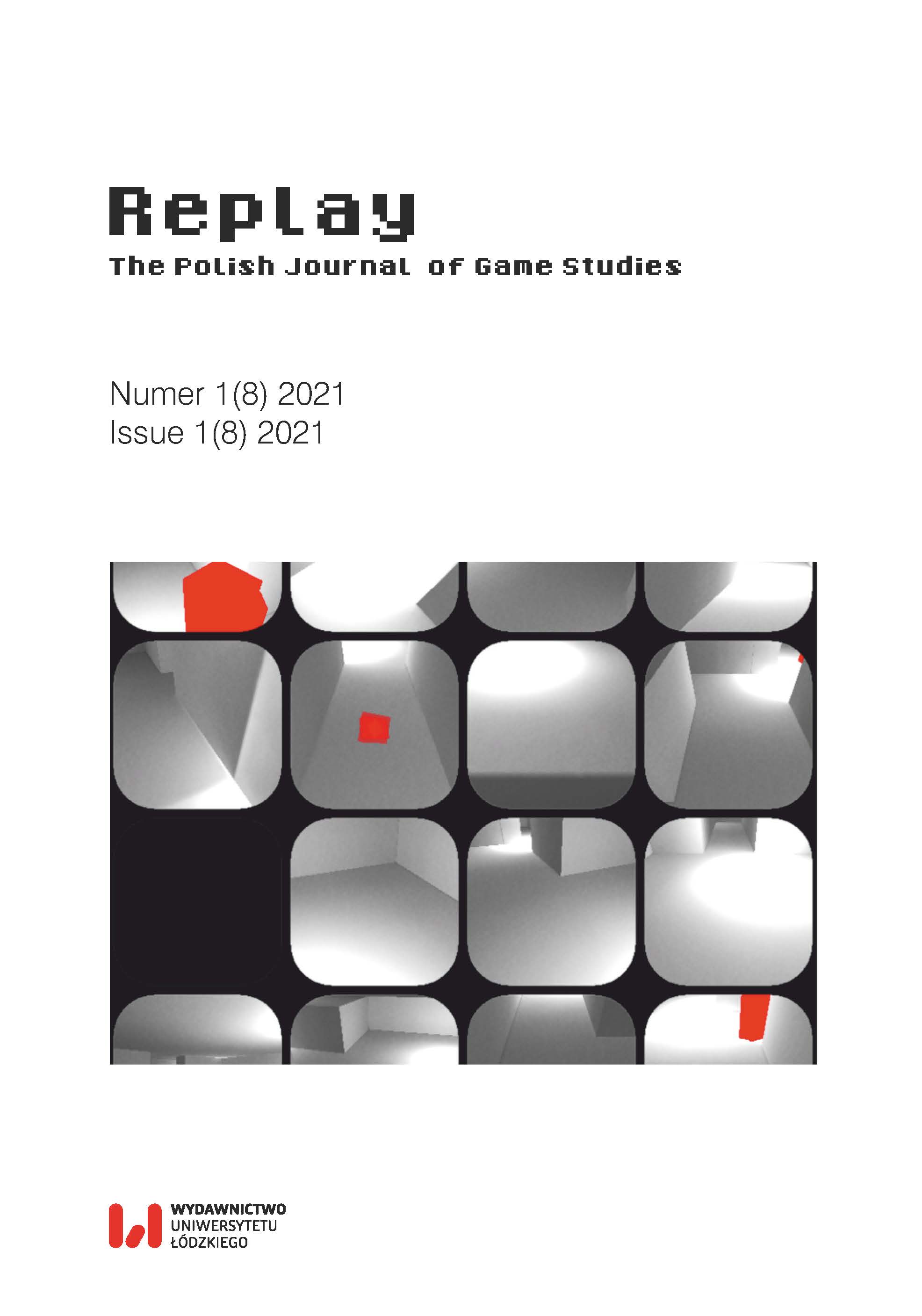The aesthetics of speedrunning: Performances in neo-baroque space
DOI:
https://doi.org/10.18778/2391-8551.08.05Słowa kluczowe:
speedrunning, gaming community, performance, aesthetics, metagamingAbstrakt
Speedrunning describes activities related to the development and performance of strategies to complete games quickly, and is a valuable source of historical and technical information, while producing specialized aesthetic explorations of a videogame’s environment. Most research on speedrunning emphasizes its metagaming or documentary function. However, speedrunning also changes the aesthetic experience of gameplay, both for players and in spectated performance. Aesthetic investigation informed by art historical perspectives, such as Angela Ndalianis’ theory of the Neo-Baroque and H.S. Becker’s study of Art World formations, offers new insights into the experience of speedrunning and how discontinuous and disjointed simulated space is experienced and appreciated as aesthetic phenomena by players and spectators. While Nidalianis has applied her theory to videogames, among other types of contemporary entertainment, further investigating speedrunning performances through this lens extends her analysis and problematizes the idea of a videogame as a singular aesthetic work, instead drawing attention to alternative aesthetic experiences videogames can offer.
Bibliografia
Arsenault, D., & Larochelle, A. (2013). From Euclidean Space to Albertian Gaze: Traditions of Visual Representation in Games Beyond the Surface. Proceedings of DiGRA (DeFragging Game Studies). http://www.digra.org/wp-content/uploads/digital-library/paper_242.pdf (accessed on August 29, 2022).
Google Scholar
Becker, H.S. (1982). Art Worlds. Berkeley: University of California Press.
Google Scholar
Betancourt, M. (2014). Critical Glitches and Glitch Art. Hz Journal, 19. http://www.hz-journal.org/n19/betancourt.html (accessed on August 29, 2022).
Google Scholar
Boluk, S., & Lemieux, P. (2017). Metagaming. Minneapolis: University Of Minnesota Press.
Google Scholar
DOI: https://doi.org/10.5749/9781452958354
Cook, L., & Duncan, S. (2016). “Any% No Sketch Glitch”: Speedrunning Final Fantasy VI and Expanding “Well Played.” Well Played, 5(2), 173–188.
Google Scholar
Franklin, S. (2009). On Game Art, Circuit Bending and Speedrunning as Counter-Practice: “Hard” and “Soft” Nonexistence. CTheory, Resetting Theory (1). https://journals.uvic.ca/index.php/ctheory/article/download/14760/5632 (accessed on August 29, 2022).
Google Scholar
Janik, J. (2020). Negotiating Textures of Digital Play: Gameplay and the Production of Space. Game Studies, 20(4).
Google Scholar
Kucklich, J. (2007). Wallhacks and Aimbots: How Cheating Changes the Perception of Gamespace. In F. von Borries, S.P. Walz, & M. Bottger, M. (eds.), Space Time Play: Computer Games, Architecture and Urbanism – the Next Level (pp. 118–121). Basel: Birkhauser Verlag AG.
Google Scholar
LeMieux, P. (2014). From NES-4021 to moSMB3.wmv: Speedrunning the Serial Interface. Eludamos. Journal for Computer Game Culture, 8(1), 7–31.
Google Scholar
DOI: https://doi.org/10.7557/23.6153
Lowood, H. (2011). Perfect Capture: Three Takes on Replay, Machinima and the History of Virtual Worlds. Journal of Visual Culture, 10(1), 113–124. https://doi.org/10.1177/1470412910391578
Google Scholar
DOI: https://doi.org/10.1177/1470412910391578
McKissack, F., & May, L. (2020). Running With the Dead: Speedruns and Generative Rupture in Left 4 Dead 1 and 2. Games and Culture, 15(5), 544–564. https://doi.org/10.1177/1555412018821528
Google Scholar
DOI: https://doi.org/10.1177/1555412018821528
Ndalianis, A. (2005). Neo-Baroque Aesthetics and Contemporary Entertainment. Cambridge: MIT Press.
Google Scholar
DOI: https://doi.org/10.7551/mitpress/4912.001.0001
Newman, J. (2008). Playing with Videogames. New York: Routledge.
Google Scholar
DOI: https://doi.org/10.4324/9780203892619
Newman, J. (2012). Best Before: Videogames, Supersession and Obsolescence. New York: Routledge.
Google Scholar
DOI: https://doi.org/10.4324/9780203144268
Niedenthal, S. (2009). What We Talk about When We Talk about Game Aesthetics. Proceedings of DiGRA (Breaking New Ground: Innovation in Games, Play, Practice and Theory). http://www.digra.org/wp-content/uploads/digital-library/09287.17350.pdf (accessed on August 29, 2022).
Google Scholar
Nitsche, M. (2009). Video Game Spaces: Image, Play, and Structure in 3D Worlds. Cambridge: MIT Press.
Google Scholar
DOI: https://doi.org/10.7551/mitpress/9780262141017.001.0001
Scully-Blaker, R. (2014). A Practiced Practice: Speedrunning Through Space With de Certeau and Virilio. Game Studies, 14(1).
Google Scholar
Smith, T., Obrist, M., & Wright, P. (2013). Live-Streaming Changes the (Video) Game (pp. 131–138). https://doi.org/10.1145/2465958.2465971
Google Scholar
DOI: https://doi.org/10.1145/2465958.2465971
Torje (n.d.). The Legend of Zelda: Ocarina of Time Any% speedrun in 17:42 by Torje [Former World Record]. https://www.youtube.com/watch?v=7YdcgFe74RE (accessed on August 29, 2022).
Google Scholar
Pobrania
Opublikowane
Jak cytować
Numer
Dział
Licencja

Utwór dostępny jest na licencji Creative Commons Uznanie autorstwa – Użycie niekomercyjne – Bez utworów zależnych 4.0 Międzynarodowe.










